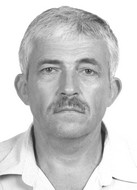Postural control ability tests by vestibular stressors for hearing impaired children
Фотографии:
ˑ:
Dr.Hab., Professor D.V. Syshko1
PhD, Associate Professor Z.N. Zevreeva1
PhD M.N. Klemparskaya1
E.V. Perekotiy1
1V.I. Vernadsky Crimean Federal University, Simferopol
The study was designed to test postural control ability in children with hearing impairments. The orthograde balancing ability was rated prior to and after the postural control tests in the 13-14 years old boys (n=10) with auditory impairments. The body balancing ability in the sample was found to vary depending on the axis of the stimulant of the semicircular channels with body mass movement area reduced in the frontal axis (p≤0.05), and with the square of migratory oscillations reduced as well (p≤0.05). The postural balance irritant was found to facilitate the biomechanic rates of the postural balancing ability being optimized in the sample. Adequately rated postural stimulants of the vestibular semicircular channels in the frontal axis were found to improve the static body balancing ability albeit associated with extra energy costs for the postural control needs (with p≤0.05).
Keywords: hearing impairments, body balance, stabilography, vestibular stressors, center of body mass.
References
- Gribanov A.V., Sherstennikova A.K. Fiziologicheskie mekhanizmy regulyatsii posturalnogo balansa cheloveka (obzor) [Physiological mechanisms of regulation of human postural balance (review)]. Vestnik Severnogo (Arkticheskogo) federalnogo universiteta. Ser. Mediko-biologicheskie nauki, 2013, no. 4, pp. 20-29.
- Danilova R.I., Sobolev S.V. Vertikalnaya ustoychivost detey 7–9 let s narusheniem slukha v usloviyakh snizheniya propriotseptivnoy chuvstvitelnosti [Vertical balance of 7-9 year-olds with hearing impairments in conditions of decreased proprioceptive sensitivity]. Vestnik Severnogo (Arkticheskogo) federalnogo universiteta. Ser. Estestvennye nauki, 2014, no. 4, pp. 68-74.
- Kubryak O.V., Kovaleva A.V., Biryukova E.A. et al Vozmozhny marker smeny funktsionalnogo sostoyaniya dobrovoltsev posle vypolneniya dvigatelnoy zadachi s bioupravleniem [Possible marker for volunteer’s functional state change after motor exercise with biofeedback]. Fiziologiya cheloveka [Human Physiology], 2016, vol. 42, no. 2, pp. 121.
- Kubryak O.V., Gorokhovskiy S.S. Staticheskie dvigatelno-kognitivnye testy s biologicheskoy obratnoy svyazyu po opornoy reaktsii [Static motor-cognitive tests with biofeedback by supporting reaction]. Prakticheskaya stabilometriya. Moscow, 2012, 88 p.
- Luchikhin L.A., Ganichkina I.Ya., Doronina O.M. Kriterii prognozirovaniya effektivnosti vestibulo-adaptatsionnoy terapii u bolnykh s rasstroystvom ravnovesiya [Criteria to predict effectiveness of vestibulo-adaptive therapy in patients with balance disorder]. Vestnik otorinolaringologii, 2004., no. 6, pp. 32-33.
- Skvortsov D.V. Stabilometriya - funktsionalnaya diagnostika funktsii ravnovesiya, oporno-dvigatelnoy sistemy i sensornykh sistem. Funktsionalnaya diagnostika [Stabilometry - functional diagnostics of equilibrium, musculoskeletal system and sensory system functions. Functional diagnostics]. Moscow: Maska publ., 2004, pp. 78-84.
- Syshko D.V., Mutyev A.V. Vliyanie vestibulyarnykh razdrazheniy na pokazateli tsentralnoy kardiogemodinamiki u sportsmenov s narusheniyami slukha [Effect of vestibular stimulation on central cardiohemodynamics indices in athletes with hearing impairments]. Nauka v olimpiyskom sporte, 2006, no. 1, pp. 82–83.




 Журнал "THEORY AND PRACTICE
Журнал "THEORY AND PRACTICE